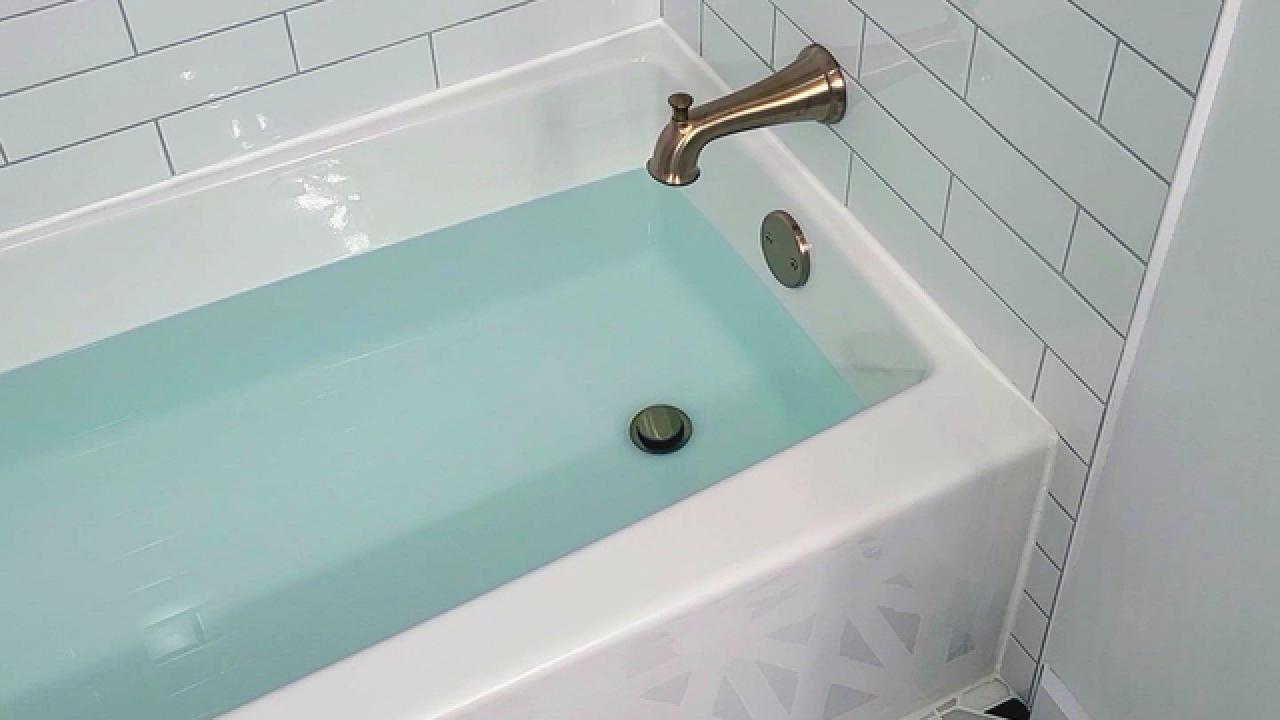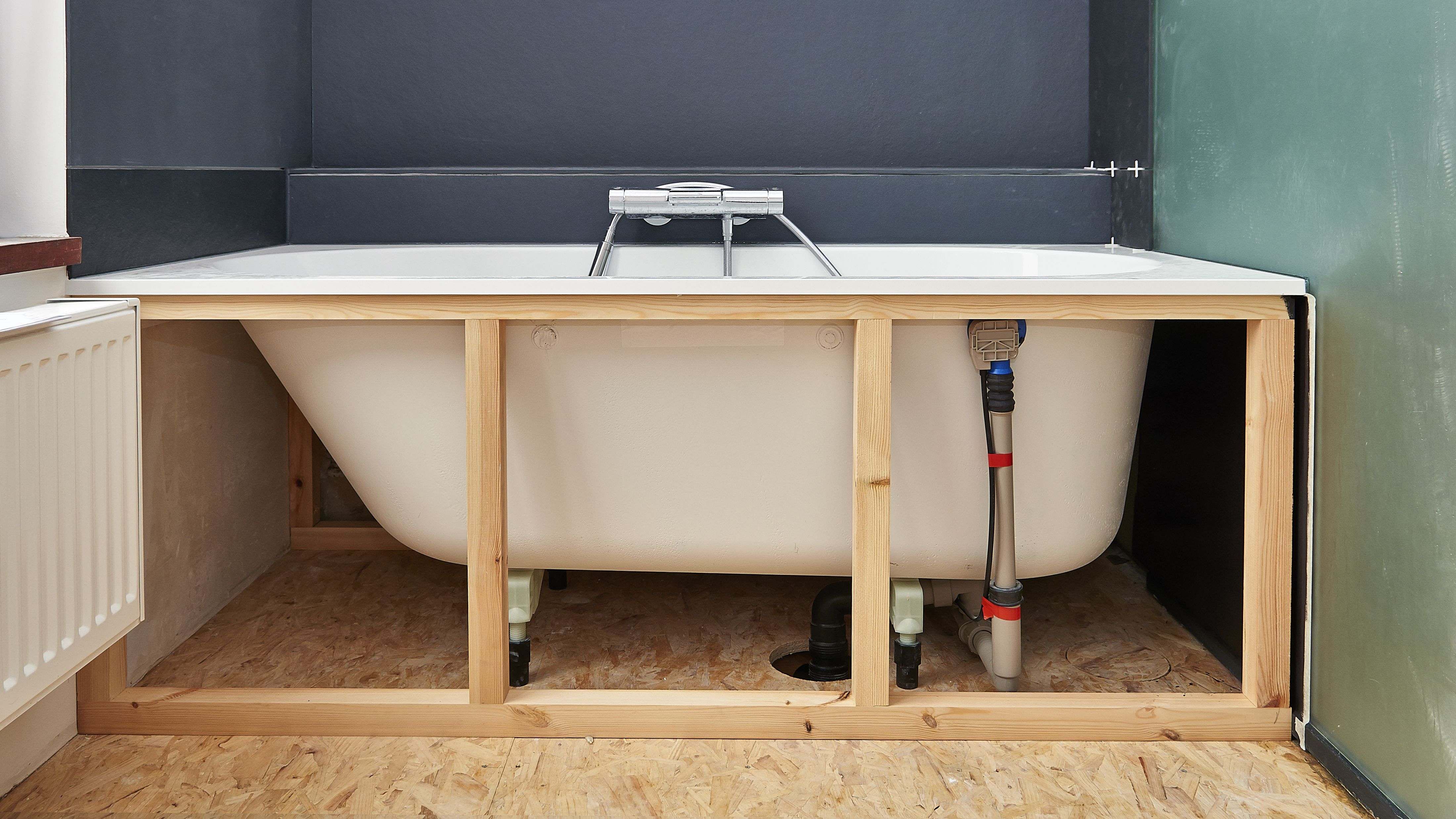Each person may have their personal idea when it comes to Installing A Bathtub.

Mounting a bath tub isn't specifically brain surgery, however it does need solid plumbing, carpentry, and in some cases, tiling skills. Replacing an old bath tub with a brand-new one is additionally a reasonably tough job. If the old tub is readily accessible, the project can move quickly; if you have to open up a wall surface to get rid of the old bathtub as well as position the new bathtub, the task is a lot harder. In either instance, the task is within a house handyman's skills, although you will need an assistant to leave the old bathtub and also embeded in the new one. Ensure you have certified yourself for the job and also fit trying it. Instead of hiring a contractor to take control of a halfway-completed task, it is much better to consider employing one prior to you start. Chances are you may require an expert plumber to make tube connections.
This article will certainly assist you set up a new bathtub in your bathroom if you have actually currently acquired a brand-new tub and do not require to alter the arrangement of your previous water pipes.
Your devices as well as material list must comprise the following:
Preparing for the Installment
First of all, the supporting framework supplied with the bathroom must be fitted (if needed) according to the manufacturer's guidelines. Next off, fit the taps or mixer to the bath tub. When suitable the tap block, it is necessary to make certain that if the tap features a plastic washer, it is fitted between the bathroom and the taps. On a plastic bathroom, it is likewise sensible to fit a sustaining plate under the faucets system to prevent stress on the bathtub.
Fit the adaptable tap connectors to the bottom of both taps making use of 2 nuts as well as olives (sometimes provided with the tub). Fit the plug-hole electrical outlet by smearing mastic filler round the sink outlet opening, and after that pass the electrical outlet with the hole in the bath. Utilize the nut supplied by the maker to fit the plug-hole. Check out the plug-hole outlet for an inlet on the side for the overflow pipeline.
Next, fit completion of the versatile overflow pipeline to the overflow outlet. Afterwards, screw the pipe to the overflow face which need to be fitted inside the bath. See to it you utilize every one of the provided washers.
Link the catch to the bottom of the waste outlet on the tub by winding the string of the waste outlet with silicone mastic or PTFE tape, as well as screw on the catch to the electrical outlet. Connect the bottom of the overflow tube in a comparable manner.The bathroom need to now be ready to be suited its last position.
Removing Old Taps
If you require to change old taps with new ones as a part of your setup, after that the first thing you should do is detach the water. After doing so, turn on the taps to drain any type of water continuing to be in the system. The procedure of removing the existing taps can be rather bothersome as a result of the limited accessibility that is often the situation.
Utilize a container wrench (crowsfoot spanner) or a faucet device to undo the nut that connects the supply pipes to the taps. Have a fabric all set for the continuing to be water that will certainly originate from the pipelines. Once the supply pipes have actually been gotten rid of, use the same device to loosen up the nut that holds the faucets onto the bath/basin. You will need to stop the single faucets from turning during this process. When the faucets have actually been removed, the holes in the bath/basin will need to be cleansed of any kind of old securing compound.
Before carrying on to fit the brand-new faucets, contrast the pipe connections on the old taps to the new taps. If the old faucets are longer than the brand-new faucets, after that a shank adapter is required for the brand-new faucets to fit.
Setting up the Tub
Utilizing the two wooden boards under its feet, place the bathtub in the required position. The wooden boards are helpful in evenly spreading the weight of the bathtub over the location of the boards as opposed to concentrating all the weight onto four little points.
The next goal is to ensure that the bath tub is leveled all round. This can be attained by examining the level and also readjusting the feet on the bath tub till the level checks out level.
To install faucets, fit all-time low of the outermost versatile tap connector to the ideal supply pipeline by making a compression sign up with; then do the same for the other faucet.
Activate the water system as well as examine all joints and also brand-new pipework for leaks and tighten them if essential. Fill the bath tub as well as also check the overflow electrical outlet as well as the normal outlet for leakages.
Lastly, repair the bath paneling as defined in the producer's instruction manual. Tiling as well as sealing around the bath tub must wait up until the bathtub has actually been utilized at least when as this will certainly settle it into its last position.
Fitting New Touches
If the tails of the new faucets are plastic, then you will certainly need a plastic adapter to avoid damage to the string. One end of the port fits on the plastic tail of the faucet as well as the various other end offers a connection to the current supply pipelines.
If you need to fit a monobloc, then you will certainly need reducing couplers, which attaches the 10mm pipeline of the monobloc to the standard 15mm supply pipeline.
Next, position the tap in the mounting opening in the bath/basin guaranteeing that the washers remain in location between the faucet as well as the sink. Secure the faucet in place with the supplier supplied backnut. Once the faucet is safely in place, the supply pipelines can be connected to the tails of the faucets. The taps can either be connected by utilizing corrugated copper piping or with normal faucet adapters. The previous type needs to be linked to the faucet ends initially, tightening only by hand. The supply pipelines can later be attached to the other end. Tighten up both ends with a spanner after both ends have been linked.
Tiling Around the Bath tub
In the area where the bathroom meets the ceramic tile, it is essential to seal the accompanies a silicone rubber caulking. This is important as the fitting can relocate enough to split an inflexible seal, creating the water to penetrate the wall surface between the bathroom and the tiling, resulting in difficulties with wetness and feasible leakages to the ceiling below.
You can select from a selection of coloured sealants to blend in your fixtures as well as installations. They are sold in tubes as well as cartridges, and are capable of securing gaps as much as a size of 3mm (1/8 inch). If you have a larger gap to load, you can fill it with spins of drenched newspaper or soft rope. Keep in mind to constantly fill the tub with water prior to sealing, to enable the activity experienced when the tub remains in usage. The sealant can split rather early if you do not take into consideration this activity before sealing.
Additionally, ceramic coving or quadrant floor tiles can be made use of to border the bathroom or shower tray. Plastic strips of coving, which are easy to use and cut to dimension, are additionally easily available on the market. It is recommended to fit the ceramic tiles utilizing waterproof or water-proof glue and also cement.
Bathtub Installation
How Important Is A Bathtub To Your Home?
High-quality baths, showers, and other bathroom updates are necessary when considering a smart investment in your home. It’s a room that you go to every day and one that is constantly being used by guests.The bathroom is one of the top trafficked rooms in a home and also one of the most valuable in terms of home resale.
Install Piping Before Tub
You will be using your existing drain and waste vent system, but pipes required include the hot and cold water supply lines and a pipe leading to a shower head. A mixing valve and shower head are also needed. Air chambers may be required.
Position the Tub
Lower the tub into place so that the continuous flange fits against the wall studs and rests on 1’x4' or 2’x4' supports. Anchor the tub to the enclosure with nails or screws inserted through the flanges into the studs.
NOTE: Remember, bathtubs and shower stalls may require support framing. A bathtub filled with water is extremely heavy, so check building codes and framing support before installing the tub.
Assemble Drain Connections
Assemble the bathtub drain connections by connecting the tub overflow with the tub drain above the trap, not beyond it. The trap will have a compression fitting that screws over the arm of the overflow assembly.
Place a Pipe For the Shower Head
First, locate a brass female threaded winged fitting and attach it to a framing support via a screw or a nail. Then run a pipe up the wall for the shower head. Sweat or solder the other side of the brass fitting to the top of the pipe.
Attaching Hot and Cold Water Lines
Attach your water lines for both hot and cold by sweating these directly into the hot and cold ports of the mixing valve. The mixing valve will be how water enters the tub’s system, not by the pipes themselves.
Install the Spout
Extend a piece of 1/2 inch pipe, or whichever length is specified in the manufacturer’s instructions, for the tub spout. Sweat on a male threaded fitting at the end of the pipe or use a brass nipple of the proper length and a 1/2 inch cap.
NOTE: At this point you should have your rough-in plumbing work inspected before proceeding further.
Check For Leaks
Restore the water pressure and check the drain connection and the supply pipes for any sign of leaking.
estore the Bathroom Wall
Replace the wall with moisture-resistant drywall as a base for your wall covering. Seal the joints between the wall and your new tub with silicone caulk as protection against water seepage.
https://www.berkeys.com/2016/12/02/bathtub-installation-dallas/

I am very curious about A Step-by-Step Guide to Installing a Bathtub and I hope you enjoyed the piece. Sharing is nice. Who knows, you could be helping someone out. I appreciate reading our article about How to Install a Bathtub: Install an Acrylic Tub and Tub Surround.
Source